Key takeaways
- Handmade paper adds authenticity and character to crafts, enhancing the creative process and final piece.
- Decoupage techniques inspire experimentation, allowing for creativity without needing advanced artistic skills.
- Choosing high-quality materials and proper sealing is crucial for achieving stunning results in decoupage projects.
- Documenting and reflecting on completed projects fosters mindfulness and helps in improving future craft endeavors.
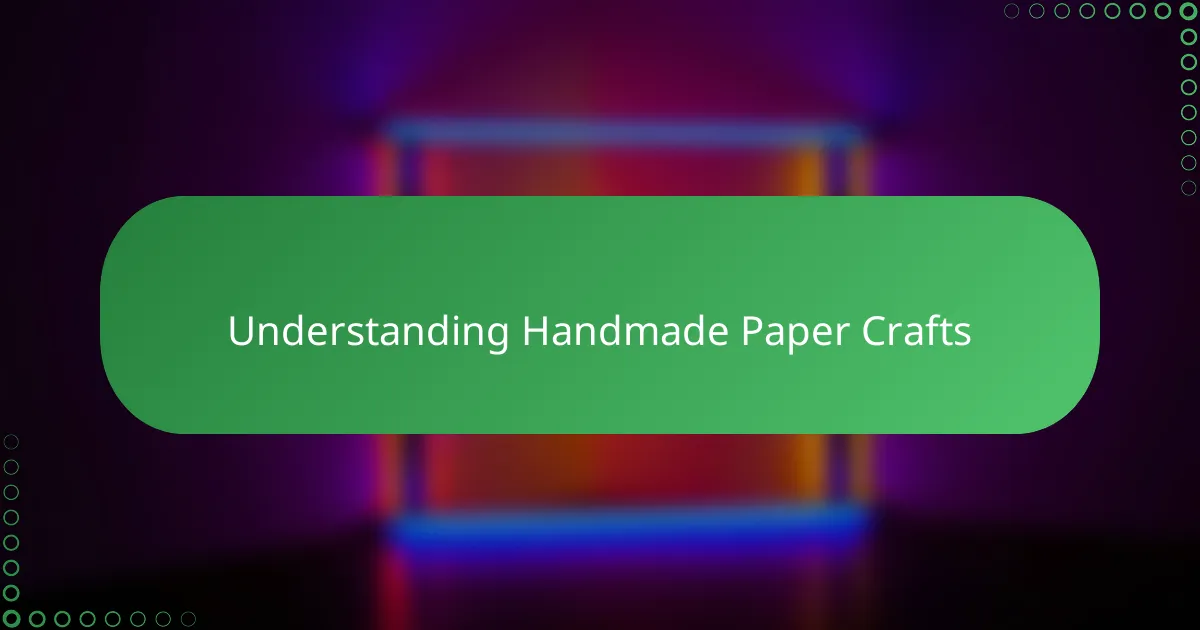
Understanding handmade paper crafts
Handmade paper crafts have always fascinated me because they blend creativity with tradition in such a tangible way. I often find myself lost in the texture of handcrafted paper, appreciating how each sheet tells its own unique story. Have you ever paused to consider how the irregular fibers and subtle color variations make every project one of a kind?
What strikes me most about handmade paper is its ability to add depth and character to any craft, especially decoupage. When I first started working with it, I realized that the paper’s imperfections aren’t flaws—they’re what make the final piece feel authentic and alive. This perspective completely changed how I approach new projects.
I sometimes wonder, does knowing the delicate process behind handmade paper inspire us to cherish our crafts more? From my experience, understanding the labor and artistry involved deepens my connection to every project, making the creation process as rewarding as the finished piece itself.
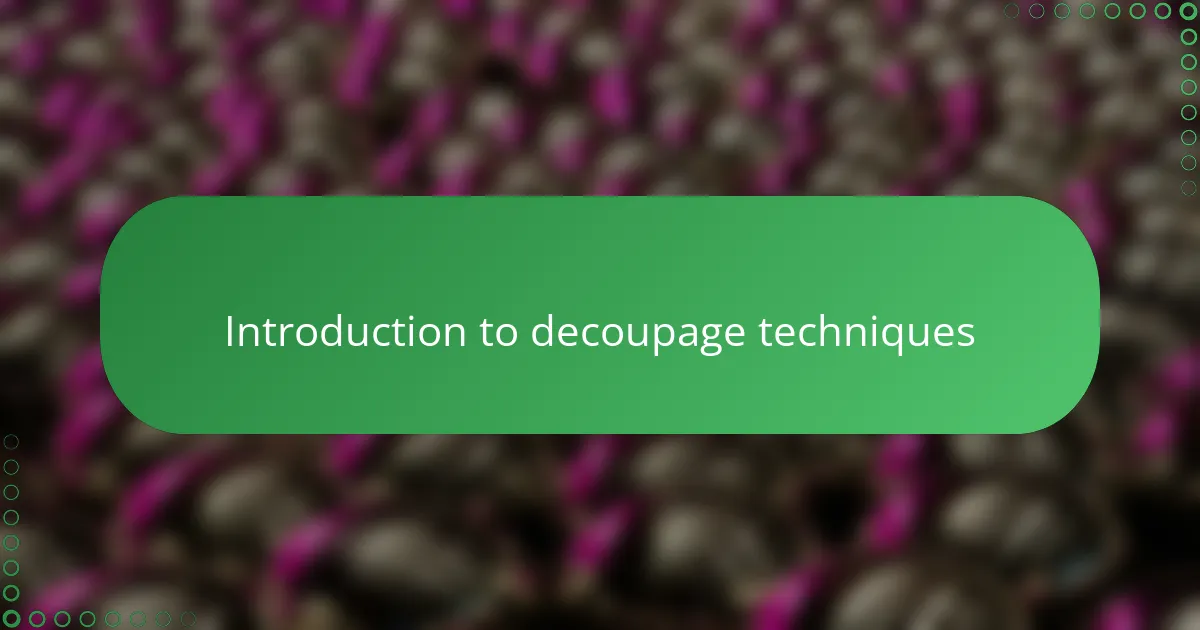
Introduction to decoupage techniques
Decoupage is one of those techniques that instantly drew me in because it transforms ordinary objects into personal masterpieces with just a few layers of cut-out images and glue. When I first tried it, I was amazed how simple materials like paper and varnish could create such depth and texture. Have you ever watched how the edges soften and blend, revealing a story beneath the surface?
What I find truly captivating is the way decoupage invites experimentation. You can combine patterns, colors, and textures in endless ways, almost like painting but without needing to be an expert artist. For me, this freedom to explore is what keeps every project exciting and fresh.
Over time, I’ve realized that mastering the basics—selecting the right papers, applying glue smoothly, and sealing properly—makes all the difference. These small details might seem minor, but they’re what elevate a simple craft into something I’m genuinely proud to display or gift. Don’t you think that’s the magic of handmade crafts?
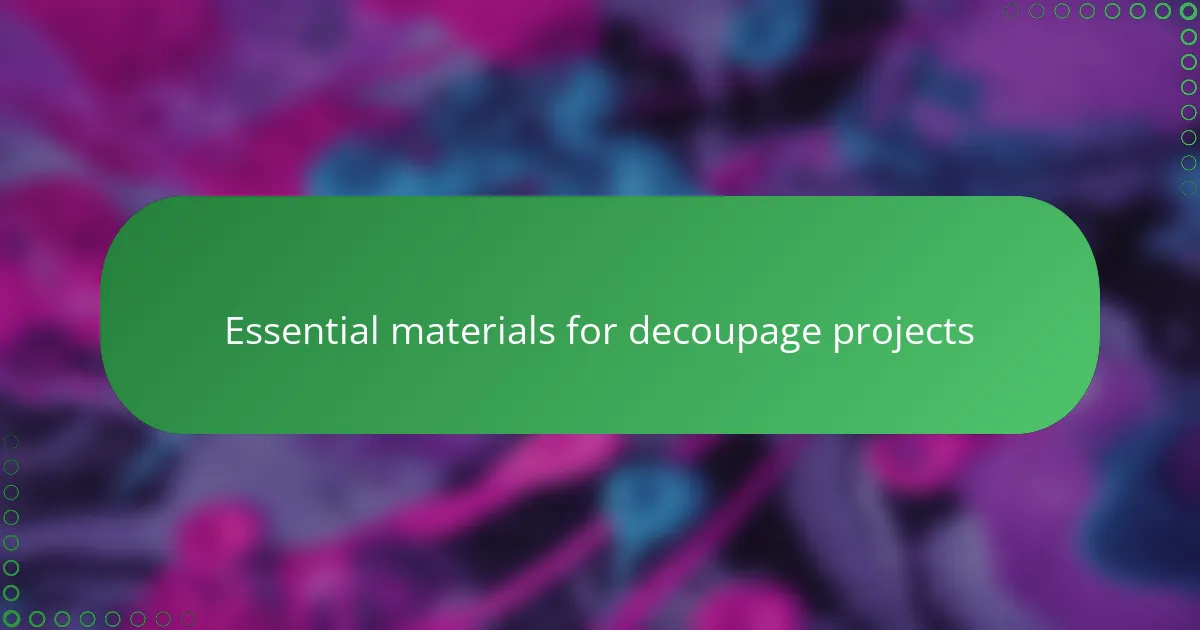
Essential materials for decoupage projects
Working on decoupage always starts with gathering the right materials, and from my experience, high-quality paper is the cornerstone. Whether it’s delicate handmade paper or printed napkins, the texture and thickness really influence how the images lay on your project. Have you ever noticed how some papers wrinkle or tear easily while others seem to melt into the surface? Choosing wisely saves a lot of frustration down the line.
I’ve learned that beyond paper, the glue or decoupage medium is just as crucial. It’s not just about sticking things down; it’s about achieving that seamless, almost painted look. When I first experimented with different glues, I found some left unwanted shine or wrinkles, which switched my entire approach to smoother, matte finishes. This subtle texture control is what separates a good project from a stunning one.
Finally, sealing your work is what locks in all the effort and beauty. A clear varnish or sealant not only protects the paper but also adds a lovely depth to the colors and patterns. I used to skip this step, thinking the design was complete, but a poor sealant made my favorite pieces vulnerable to wear over time. Have you ever felt the satisfaction of watching your creation come alive with just that final, glossy touch?
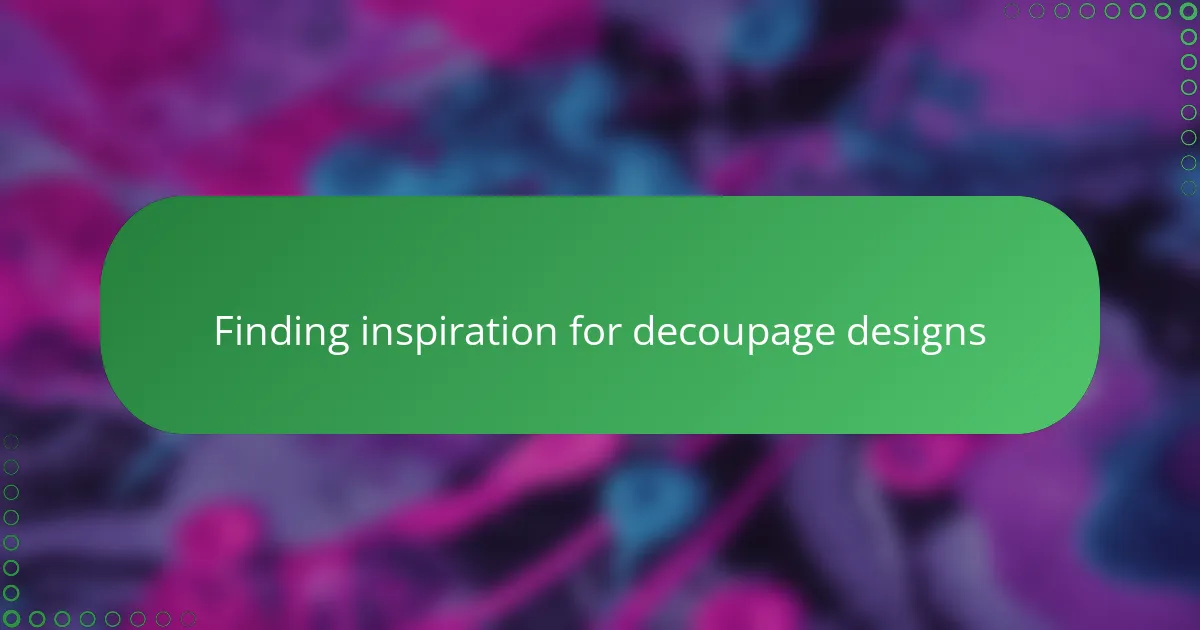
Finding inspiration for decoupage designs
Finding inspiration for decoupage designs often feels like a treasure hunt for me. Sometimes, a simple walk through a park or a glance at vintage magazines sparks ideas I hadn’t considered before. Have you ever noticed how a faded flower or an old postcard can suddenly unlock a whole theme for your project?
I also turn to nature when I’m stuck—its colors, patterns, and textures are endlessly inspiring. There was this one time I was struggling to pick a design, and then I found myself captivated by the intricate veins on a fallen leaf. That organic detail ended up as the centerpiece of my entire decoupage.
Sometimes, the best designs come from mixing unexpected elements—like combining botanical prints with snippets of handwritten letters. It’s those quirky juxtapositions that make a piece feel truly personal and alive. Don’t you think that finding beauty in the little details makes crafting even more rewarding?

Planning your first decoupage project
Planning your first decoupage project felt a bit daunting at first, until I realized that starting small made all the difference. I remember choosing a simple wooden box as my canvas, which helped me focus on mastering the basic steps without feeling overwhelmed. Have you ever noticed how breaking a project into manageable pieces can actually inspire creativity rather than limit it?
One thing I quickly learned is that envisioning the final look before diving in saves a ton of time and frustration. I like to gather a few paper samples and play with different arrangements before gluing anything down—almost like composing a tiny collage. Does imagining the end result make you more excited to create, too?
I also found that setting aside the right workspace, with good lighting and all my materials within reach, changed everything. When I was comfortable and organized, I felt more relaxed and focused, which let the creative ideas flow naturally. How much do you think your environment influences your crafting mood? For me, it’s surprisingly powerful.

Documenting and evaluating project outcomes
Whenever I finish a decoupage project, I make it a point to document every detail—what papers I used, the glue type, drying times, and even my mood while crafting. Over time, this log has become my go-to reference, helping me spot which combinations yield the best results and which techniques I might want to tweak. Have you ever found that jotting down these little notes makes you more mindful and connected to your work?
Evaluating the outcome also means stepping back and honestly assessing what worked and what didn’t. Sometimes, a project that seemed perfect during creation reveals small flaws once fully dry, like paper lifting or uneven sealant. I’ve learned to see these imperfections not as failures but as valuable lessons that guide me to improve future pieces.
Reflecting on each finished craft has turned into a rewarding ritual for me. It’s more than just critique—it’s a way to celebrate progress and discover new ideas. Don’t you find that taking this moment of pause deepens your appreciation for handmade art and fuels your creative spirit?
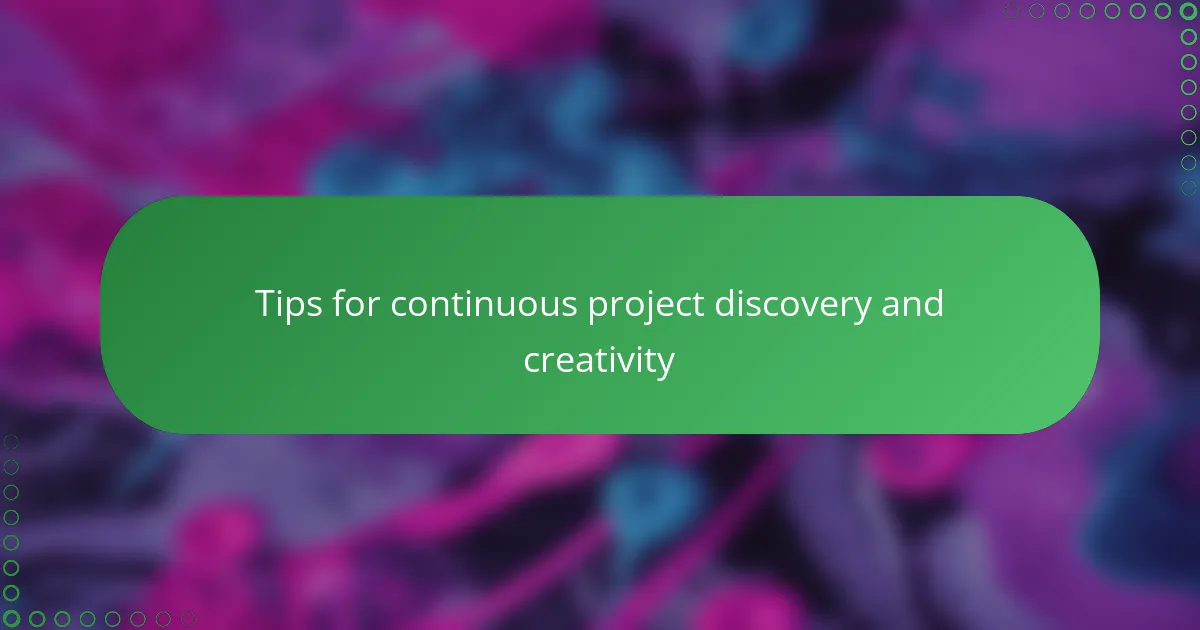
Tips for continuous project discovery and creativity
One tip I keep coming back to is staying curious—whenever I see something beautiful or unusual, I ask myself how it might translate into a decoupage project. Sometimes, a spontaneous idea strikes from everyday life, like a pattern on fabric or a color combination in nature, and that simple spark leads me down an exciting creative path. Have you ever noticed how curiosity can turn ordinary moments into rich inspiration?
Another strategy that’s helped me is mixing different sources of inspiration regularly. I rotate between browsing craft books, scrolling through online galleries, and revisiting old projects to see what new ideas emerge. This constant variety keeps my creativity fresh and prevents me from falling into repetitive patterns. Don’t you think tapping into diverse creative wells stirs up the most original projects?
Finally, I make a habit of giving myself permission to experiment without pressure. Not every idea turns into a masterpiece, and that’s perfectly okay. Sometimes the messiest, most unexpected attempts teach me more and open new doors than the carefully planned ones. How often do you allow yourself to play and explore just for the joy of discovery? That freedom, I believe, is the secret to continuous creative growth.
